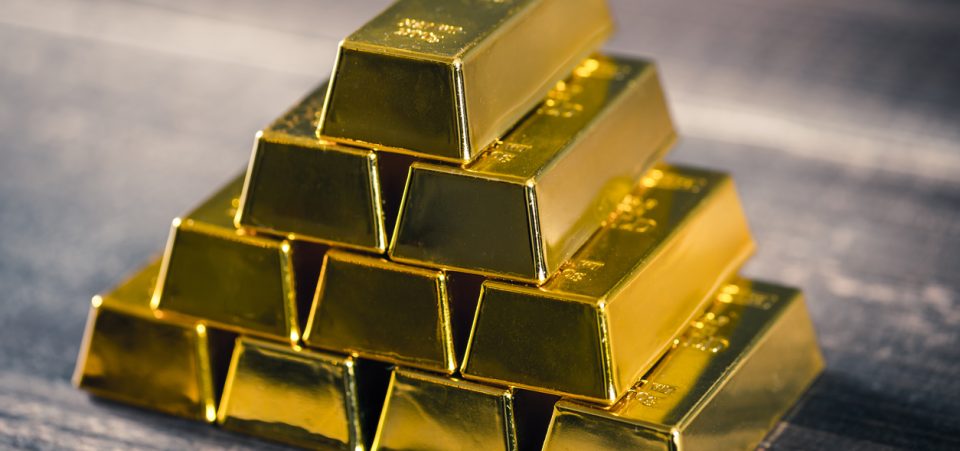Gold Price Will Soon Rise from Hibernation
The gold price appears to be stuck in limbo. Every time the price per ounce hints at breaking out above $1,350, it meets resistance and falls back toward the floor of about $1,325.
It’s unclear why the the price of gold has not consolidated and increased its gains from the start of 2018. Nothing has changed to suggest that optimism has returned to Wall Street after the “flash crash” of February 2018. That episode has shown that there was nothing “flash” about the crash.
Shortage of Exploration Will Tighten Supply
Before considering the external factors that will contribute to a higher gold price, there are some interesting production scenarios to consider. The price of gold should rise, according to IAMGOLD Corp (NYSE:IAG) CEO Stephen Letwin, because there is a shortage of exploration. (Source: “Gold seen rising as Canadian miner eyes lack of exploration,” Business Mirror, April 5, 2018.)
The shortage of exploration activity will inevitably reduce the replacement capacity, causing a shortage of gold resources.
Many gold companies may have been holding off on exploration until prices rise. But, the industry has reached a crucial crossroads. India and China continue to show strong demand, which will accentuate the shortage of exploration. The combination of factors should push the gold price to at least $1,500 per ounce by the end of 2018. (Source: Ibid.)
Bearish market sentiment has reluctantly, yet steadily, replaced the month-long euphoria that sparked the post-Trump tax cut rally. Indeed, in the short term and long term, the prospects for stocks are grim. Stocks could relinquish most of their 2017 gains—if not more (meaning, the Dow dropping by at least 20%).
The same general risks that are fueling volatility and drawing investors away from high-risk equity should benefit the gold price. Those risks certainly include the probability of a trade war with China, as a start (others are also in Donald Trump’s capricious periscope).
Still, they also include the bursting of the tech stocks, related to the so-called FANG companies—Facebook Inc (NASDAQ:FB), Apple Inc. (NASDAQ:AAPL), Netflix, Inc. (NASDAQ:NFLX), and Google, now known as Alphabet Inc (NASDAQ:GOOG)—under the weight of growing international demands they pay more taxes.
Then there’s the Federal Reserve variable. How many rate hikes will Fed Chair Jerome Powell approve? What will investors’ risk threshold be as the rug of quantitative easing policies—which fed an almost decade-long bull market—gets pulled from under their shares?
Investors will be looking for more than a flight to quality. They’ll want to park their money in the kinds of stocks that have legacy, are less subject to whims, and whose value is backed by real profits. Think more Lockheed Martin Corporation (NYSE:LMT)—and even more General Motors Company (NYSE:GM)—and less Tesla Inc (NASDAQ:TSLA).
Yet, investors who have a more three-dimensional vision of the markets will seek out the traditional havens of gold. Bitcoin was posing as a gold substitute, but it has more of a fate than a destiny. Bitcoin’s prospects are for a value closer to $500.00 than $50,000, as some have prophesized. Who are these visionaries? (Source: “Mystery Investor Bets $1 Million on Bitcoin Hitting $50,000,” Fortune, December 21, 2017.)
World Faces Big Threats and Investors Will Seek Havens
They are the ones who have been paying attention to what’s really going on under the headlines. They have understood that Trump has limited power and that the “Deep State”—that is, the various institutions like the Pentagon, the lobby machine, and the vested interests behind Congress—are still the ones calling the shots.
President Trump, meanwhile, backtracked on many of the policy goals he championed as a presidential candidate. As far as the prospects for gold are concerned, the key one revolves around Russia—and, in a related way, to Syria and the Middle East.
Russia, Russia, Russia
Rather than achieving better relations with Moscow and Vladimir Putin, the international establishment “machine” has sucked the United States into another conflict with Russia. Since day one—or rather, since the very day after the electoral colleges chose Trump over rival Hillary Clinton—the U.S. political establishment, with the complicity of the security agencies—with the FBI and CIA at the helm—have questioned Trump’s legitimacy.
They attributed Trump’s victory to Russian cyber-attacks, hackers, and to Putin himself. They deliberately obfuscated the evidence that, apart from a “troll farm” in Saint Petersburg producing ads (many of which reached Facebook users after the election), deceived Americans.
The sensation was that Russians had hacked the voting booths. It then turned out that the real trolling was being conducted by Facebook through Cambridge Analytica. Certainly, if Special Counsel Robert Mueller had any substantial evidence of Trump colluding with Russia, he might have produced it by now.
Not satisfied, the establishment has fueled a series of international episodes intended to tilt the geopolitical balance against Russia. Trump, despite the calls—becoming ever fainter—for meetings with Putin, was “trolled” into attacking a Russian-protected Syrian military base in April 2017 on unsubstantiated charges that the Syrian government used chemical weapons against a rebel safehouse near Idlib.
The Russians themselves admitted that the American missiles destroyed two old planes without causing any damage to the facility itself. The runway at the Sharyat air base remained fully functional. What does this suggest? Trump understood he was being sucked into a manufactured crisis. His staff, we know, warned the Russians ahead of the strike. In turn, the Russians likely warned the Americans to limit the scope of the attack to avoid unpleasant retorsions against U.S. troops in Syria. (Source: “UN Probe Into Chemical Weapons in Syria ‘Heavily Politicized’, Lacks Clarity,” Sputnik International, October 26, 2017.)
Inadvertently, British Prime Minister Theresa May and her—more hapless than Quixotic—foreign affairs minister, Boris Johnson, have corroborated the analysis of all those—including myself—who questioned the nature of such allegations. Now, after another “chemical weapons attack” accusation directed against Moscow (that’s how May and Johnson described it), the world has reached the brink of another Cuban Missile Crisis situation, except that a caged President Trump is in charge at the Oval Office rather than a John F. Kennedy.
Trump Is No Kennedy, and Another Missile Crisis Is Coming
Kennedy clearly fought off the establishment. His actions and speeches on a number of geopolitical problems suggested he was pursuing an independent approach, which clearly conflicted with the establishment plans. If there’s any doubt about it, just listen to a few minutes of his famous address at American University in June 1963.
Trump lacks that kind of vision. And even if he had it, Trump lacks the authority, given that—so far—he’s had to retract on every major point of foreign policy. He got the Jerusalem recognition approved because there was strong bipartisan support for it. But on the Skripal case, Trump had to play ball. He expelled over 60 Russian diplomats and his administration dared even to complain after Russia reciprocated, as is the diplomatic standard.
The Russians have accused the West, NATO, the U.K., and evidently its chief ally, the United States, of “playing with fire” and of proffering false accusations against Moscow in the poisoning of former Russian spy Sergei Skripal and his daughter in Salisbury, England.
As it happens, both are said to be recovering, even if the nerve agent that Boris Johnson claimed to have 10-times the power of “VX” (a known deadly poison) should have killed them within minutes, if not seconds. The Kremlin has stressed from the start that there is no evidence that Russia poisoned the former spy. The tests could not even verify the nature, let alone the source, of the substance.
Russia wants an apology from Theresa May and Boris Johnson. But Russia probably wants an even bigger apology (and concrete actions to improve relations) from Washington.
What are the chances this will happen?
The Skripal case will go to the annals of history as a grotesque provocation. And it’s probably what the U.K. and the U.S. wanted. A cold war and tensions with Russia help boost the military industry. The U.K. doesn’t want to leave the European Union. It’s too expensive and it’s looking for ways to delay the process.
If investors have not realized that gold is the only safe investment yet, they will soon enough. But the gold price might already be too high by then.






